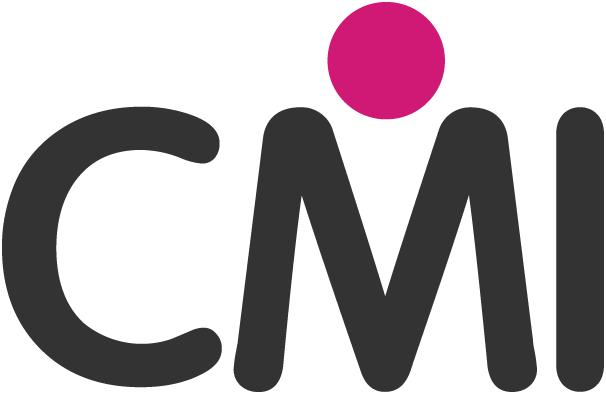How Do You Build Trust as a Manager?
Written by Mandy Flint and Elisabet Vinberg Hearn Tuesday 22 November 2016
Without trust, a team can never function optimally.
Often a group of people is a team on paper but isn’t really functioning like a team in reality. The lack of interaction, trust and openness suggests they are a group of strangers rather than an effective team.
Unless people know each other, they can’t trust each other. So trust starts with team members getting to know each other.
The Reasons Why Team Members Don’t Know Each Other
Here are the top reasons:
They just want to get on with the job tasks, and are not seeing working relationships as part of that job.
They are busy enough as it is when they meet.
It’s not encouraged by leaders or others.
They don’t see it as important, they don’t see the point.
They don’t prioritise it.
Personality differences exist.
Negative first impressions have been formed and can be hard to change.
Egos get in the way of connecting with others.
Whatever the reason, not knowing each other has an impact.
The Impact of Team Members Not Knowing Each Other
When team members don’t know each other they withhold information and also don’t share their ideas and experiences with each other.
They also don’t feel comfortable telling the truth. This doesn’t necessarily mean that they are lying or having a negative intent. It simply means they are cautious with what they say for fear of the reaction they will get.
This could be the result of previous experience where truth was not welcome, where a leader ‘shot the messenger’ or didn’t like what he/she heard and punished the person who was being honest.
It could also be because they are noticing that others are not telling the truth. They also miss out on opportunities for quick answers and resolutions to problems.
What is interesting to remember is that the behaviours described here are not always conscious, intentional behaviours; they are often merely part of a survival or coping strategy.
The Impact on the Business, Its Customers, Employees and Stakeholders
When people don’t know or trust each other it leads to a hesitance or unwillingness to work together, which makes it hard to perform even the simplest of tasks.
That’s one link between the lack of trust and the bottom line, but it’s not the only one.
The lack of cooperation means it takes longer to get the work done, which affects productivity, which in turn affects costs.
And let’s not forget that when trust is low, loyalty is low too, leading to higher employee turnover, which leads to more costs.
There are the costs of hiring and training new people. There are also costs related to loss of knowledge and experience that impact the customers and their loyalty and spend.
This link between lack of trust and additional cost is rarely made by leaders.
In really extreme cases, lack of trust will also lead to the loss of customers. Enough said.
Solutions
A team needs to spend time together, and it is important to invest time in getting to know each other in order to trust each other. It’s actually that simple.
If you are the leader of a team, you can make this happen by recognising that it needs some thought and follow-through. It is simple to do.
Solution 1: Encourage Your Team Members to Talk
Whether you are a leader or a member of the team, you can be the one that takes that initiative in encouraging team members to talk. It isn’t rocket science; it is as easy as that.
It just takes someone to start it, someone needs to step up to the plate and be the hero, the one that makes it happen. This can happen in team meetings, where it can form a regular spot on the agenda. It can also be encouraged through having employees buddy up on job tasks where talking can happen naturally as part of working together.
And one of the most effective ways to get people to talk is to show genuine interest in them by asking questions.
Tread carefully though – asking too many questions can sound like an interrogation, no matter how well intended they are. Pick one or two to get the conversation going, and take it from there.
Here are some questions that work:
So, what did you do before you started working here?
Where do you come from?
Where did you go to school?
What was your very first job?
Did you always intend to work in (this industry)?
What do you do outside of work, do you have any particular hobbies/interests?
Where do you live?
What do you think we could be doing differently as a team?
What do you enjoy the most about your job?
If you could do anything, what would you do?
If you were CEO, what would you change about how we do business?
Solution 2: Disclosure Breeds Disclosure, Leading to Greater Openness
If you want others to talk and share, you need to first share something about yourself and not just your work image, but something about you as a person.
You need to demonstrate trust to get trust; if you trust them with personal information about you, they are more likely to do the same. As mentioned earlier, you can do this in meetings, over lunch, during informal huddles, in the lift or while waiting for the bus.
People are naturally curious about each other and if you show that it’s OK to talk about yourself, people will feel good that you were interested enough in them to share something about you.
Solution 3: if Openness is Lacking Where You Work, You Can Decide What You Are Willing and Prepared to Share
Work cultures can vary greatly and some cultures are naturally open and trustful. In such a culture, opening up is easier and forms part of the norm. In more guarded cultures though, where people have learnt to watch their words, it would be unwise to be too open as this may be met by surprise or even suspicion and could be damaging for the person’s standing in the organisation.
A safe starting point is sharing work knowledge and experience; you can progress through to more personal disclosure as trust grows. You can also praise people for opening up when they do it, as this can encourage others to do the same.
Solution 4: Decide to Invest in Building Relationships
Taking time to get to know people is critical and yet people often see it as a waste of time.
If you change your way of thinking and instead think of relationship-building as part of the job, then you’re not in danger of seeing it as a time-consuming addition to the job and avoid it.
It is simply a part of being successful, by creating a great team environment where work can be more effectively performed.
Think about when an issue arises at work; it often comes down to resolving the issue by going to the person you know, whom you have the best relationship with and who you trust will be able to help you. This then allows you to resolve the issue quickly and more efficiently.
So make the investment, and carve out time for building relationships unless it’s already part of your daily agenda.
Solution 5: You Must Spend Time on Getting to Know Each Other
Do this outside of formal agendas and business meetings. You need to create informal opportunities to spend time together as well. These can include:
- Office breakfasts
- Lunches
- Huddles
- Coffee/tea breaks together
- Drinks after work
- Dinner Sports
- Other social activities
Keep in mind that for many people it’s hard to meet up outside of work hours and this is part of work after all. It doesn’t have to be very time consuming, but it needs to be regular.
Some teams even have a rule that says ‘we are not to talk about work’ during these social informal times together. Realistically this can be tough sometimes, so some teams put money into a hat every time someone talks about work, then they donate that money to charity.
Solution 6: Explain Why It’s So Important to Know Each Other in Order to Work Well Together
You need to carve out the time needed and you need to be explicit about what you’re doing, so that the team knows why it’s important to know each other.
Create an interest in it, help people to feel how beneficial it is, share examples of where it’s been useful and successful – invite the team members to share their examples.
People can often remember a time when they were in a powerful team and remember how well they knew each other and what that created for them. Team members don’t always make the links from knowing each other to being part of a successful team, so help them see that link.
Solution 7: Keep Promises
There’s nothing quite as powerful when it comes to building trust, as doing what you promised. When promises are met, other people can relax, safe in the conviction that they know what is expected and what they can expect.
So holding each other to account and doing what you say you will do is part of knowing each other.
If I know I can rely on you, then I understand you better and know you better, and therefore I have greater trust. So creating an environment where promises are made and kept is important.
Even using the word promise rather than commitment makes a difference. There is something very powerful in saying ‘I promise’.
Solution 8: Stop Sticking Your Head in the Sand (if You Are)
Having team members who know and trust each other is not just a ‘nice to have’, it is a crucial business strategy. It’s your job.
You could leave it to luck, but let’s be frank, success is rarely, if ever, down to luck.
Actively consider the benefits you can reap by getting proper ‘teaming’ to happen in your team. The team members don’t need to be best friends, they just need to know and on some level like each other.
Trust happens over time. It’s not something we can demand – trust is earned - and the biggest driver for trust is behaviour. It’s how we make other people feel, how we impact them that makes them trust us, or not.
So pay particular attention to your behaviours when you want to build trust.
Leading Teams – 10 Challenges: 10 Solutions by Mandy Flint and Elisabet Vinberg Hearn is out now from FT Publishing. Buy the book on Amazon now and explore the 10 challenges that teams face in more in detail.
“As a manager, I want my team to flourish”
Adam Werlinger CMgr MCMI shares how becoming Chartered helped him develop his approach to leadership
Developing in-demand management skills with CMI HTQs
Blackpool and Fylde College have made it their mission to address management skills gaps with CMI technical education.
Developing leadership excellence in the Fire Service
Empowering fire service leaders with bespoke CMI and NFCC leadership programmes for new and middle managers.
Highlights – 9 April
Why EDI matters (and how everything is connected). Plus, new CMI research into moving the needle on gender wage disparity
Article
Our extensive range of articles are designed to keep you in the loop with all the latest management and leadership best practice, research and news.
Members See More
CMI Members have access to thousands of online learning and CPD resources. Learn more about our membership benefits
Join The Community
CMI offers a variety of flexible membership solutions, tailored to your needs. Find out more and get involved in the CMI community today.
